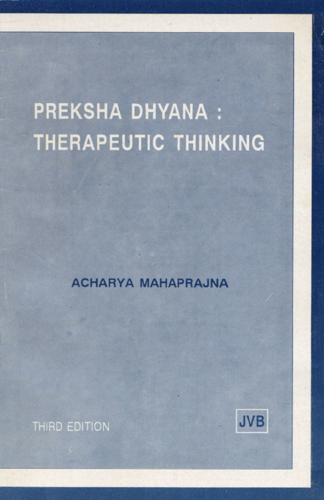Today psychologists and scientists have discovered that colour is the most important of the environmental factors which affect the conscious, subconscious and unconscious minds of a person. Colour profoundly affects our entire personality.
Light and colour profoundly affect the health and behaviour of living beings. Importance of sunlight to the vegetable kingdom is universally accepted. Ancient as well as modern science have been keenly interested in the studies of the effect of different colours on the physical, mental and emotional states and behavioural patterns of human beings as well as other animals. Light is the most important environmental input after food in controlling physical, mental and emotional functions.
Visualization and perception of psychic colours in conjunction with psychic centres is a very important exercise in the system of prekṣā meditation. In this exercise the practitioner concentrates his full attention on a prescribed psychic centre and visualizes a specific bright colour at that centre. Mental steadiness and concentration are essential in this exercise. Concentration here means intensified and substained visualization of a desired colour which is produced by the subtle taijasa body and then projected by the mind
Perception of psychic colours in conjunction with psychic centres produces internal chemical transmutations and these, in turn, initiate the process of attitudinal change i.e. eradication of psychological distortions and acquisition of desirable virtues.
REPEATED RECITATION OF IDEALS & CONTEMPLATION
Repeated prolonged recitation of words (or sentences), which describe the practitioner's intense will to acquire a virtue, can bring about a radical attitudinal reform. The mental faculty or function which is directed to conscious and intentional action is called will. If one applies one's will-power with a resolute determination that something shall happen, it will happen. Full concentration of mental faculty coupled with intense willing results in the fulfilment of the desired objective. In other words, repeated willing and auto-suggestion by a practitioner of ANUPREKSHĀ enables him to achieve a desired objective. If his objective is to effect an attitudinal change (e.g. from negative), he does bring about the change. Whether one's goal is spiritual or not, the exercise of auto-suggestion positively accomplishes the desired transformation.
 Acharya Mahaprajna
Acharya Mahaprajna

